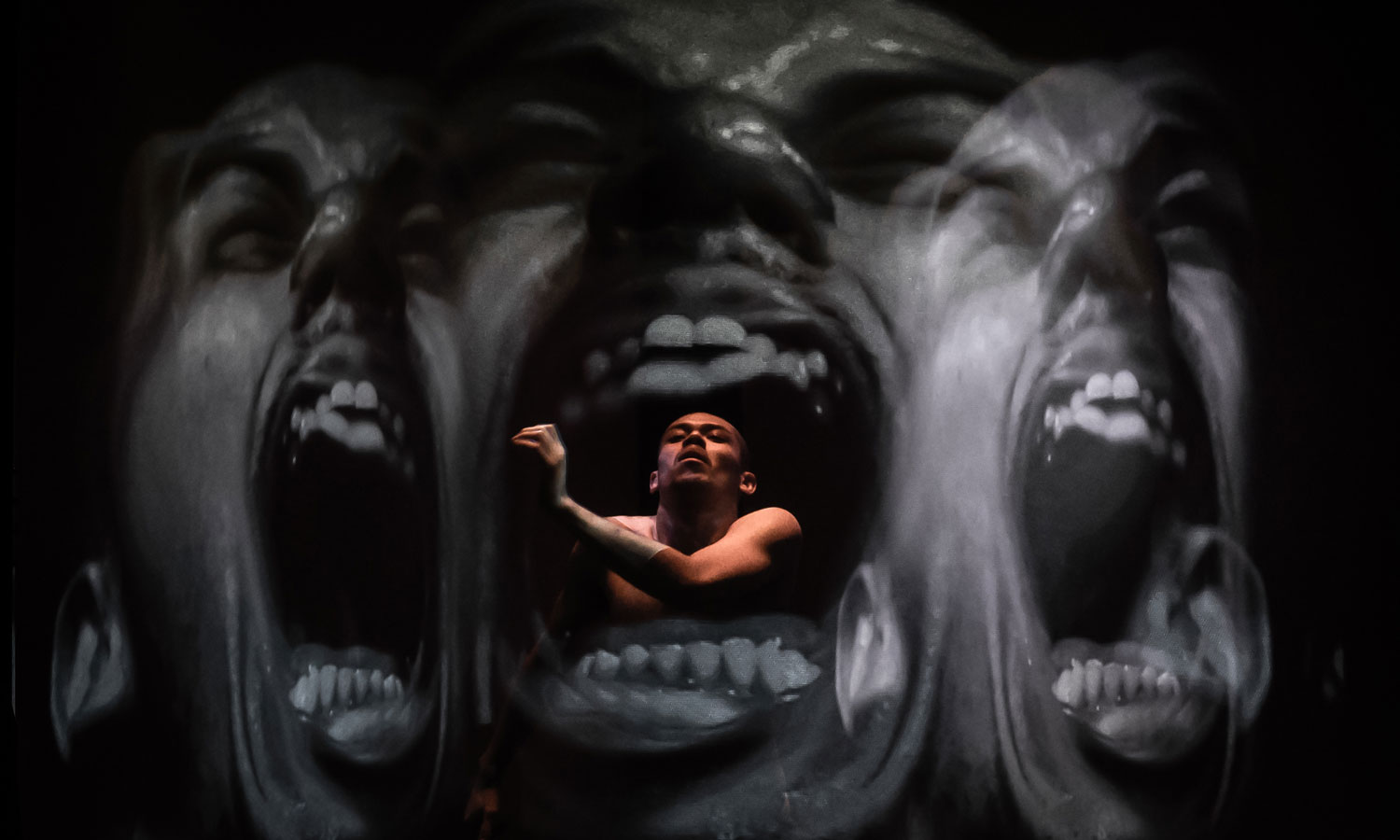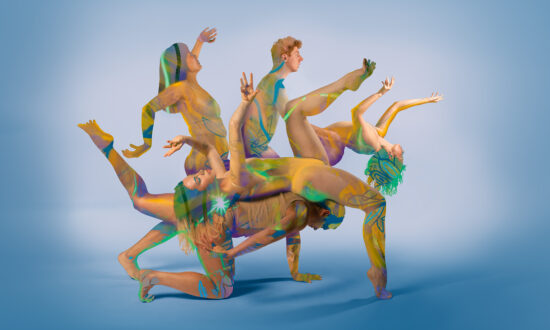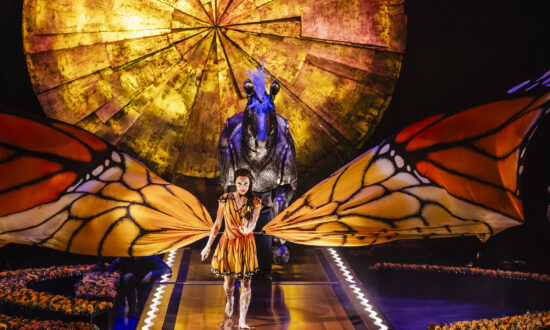As the audience is ushered through a door at the Festival Theatre, the dancers are already on stage. So, it turns out, are we.
Our programs invite us to explore the space throughout the show: to walk around the performers in their corporate-grey parachute suits, examine the moveable mesh screens displaying projections of bodily imagery, and even take photos. This license to roam also comes with a polite warning: “Remember that your choices may impact the experience of those around you.”
Infinitely Closer is particularly concerned with this tension between personal and collective freedom. It’s a theme that has been on the mind of T.H.E. (The Human Expression) Dance Company artistic director Kuik Swee Boon since the COVID-19 pandemic, which made urgent the question of how much individual liberty we are prepared to sacrifice for the protection of others. The Singapore-based company first staged this innovative production in 2022; this year’s OzAsia performance marks its Australian premiere.
Underpinning all of T.H.E.’s work is Swee Boon’s own dance methodology, HollowBody, which emphasises the body as the foundation of all experience and expression, and through improvisational tools aims to foster within the dancer a deeper awareness of, and connection with, their body. It might sound abstract in theory, but seen in practice, his vision is clear.
The way the dancers move is astonishing. Undulating as naturally as seaweed in an ocean tide, they ripple in a constant rearrangement of shapes, making use of every joint, from their spines down to each finger and toe. In this intimate setting they are close enough for us to see the sweat on their foreheads, the dirt on their feet, their bones in sharp relief under bright lights.
A narrative of freedom, rebellion and human nature plays out over several scenes, their progression marked by a dynamic soundscape from Kent Lee and Guo Ningru, lighting design by Adrian Tan, and SEESAW Design’s digital projections. The seven dancers (including Australian guest artist Billy Keohavong) shed their grey outer shells to the screech of breaking chains and insistent, accelerating drums, and slip from lyrical, liquid solos and partner sequences into athletic group movements. The screens they push around the stage create ever-changing formations of boundaries and doorways.

Infinitely Closer explores themes of freedom and rebellion. Photo: Bernie Ng / supplied
Thinking about freedom goes hand-in-hand with thinking about power, and Infinitely Closer demonstrates this by challenging the audience/performer power dynamic. In one scene, the dancers commandeer a camera and turn it on the audience in a sudden role reversal, projecting us onto the screens. Some people respond to their visibility with averted eyes; others grab their own phone cameras to capture themselves being filmed, reminding us that technology is an inescapable aspect of any discussion of freedom today.

Get InReview in your inbox – free each Saturday. Local arts and culture – covered.
Thanks for signing up to the InReview newsletter.
Even when expressly given permission to play with the borderlines normally separating an audience from the stage, most find the prospect of such freedom daunting and are content to watch at a traditional distance.
In a post-show Q&A session, Swee Boon admits that it’s an issue T.H.E is continuing to experiment with, noting that even in the absence of physical boundaries on stage, lighting can prove just as intimidating a barrier for those accustomed to hiding in the dark.
Infinitely Closer is an ever-evolving discussion that we are fortunate to participate in.
T.H.E. Dance Company presented Infinitely Closer at the Festival Theatre on Friday and Saturday as part of the 2023 OzAsia Festival, which continues until November 5. Read more OzAsia stories and reviews here.
Support local arts journalism
Your support will help us continue the important work of InReview in publishing free professional journalism that celebrates, interrogates and amplifies arts and culture in South Australia.
Donate Here



